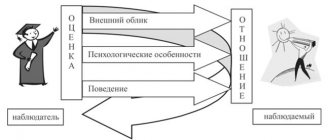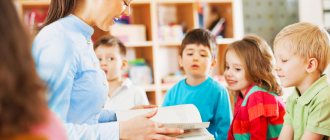Peer relationships and friendships
Having friends during adolescence is associated with many aspects of psychological well-being:
- Close friendships provide an opportunity to explore one's self and develop a deep understanding of the other person. Open, sincere relationships with friends promote sensitivity to each other's needs and desires, strengths and weaknesses. Teenagers get to know themselves and their friends better. This process contributes to the development and formation of identity.
- Teenagers' relationships with peers serve as a kind of model for their future social relationships with the world. Teenagers, who at the age of 12–14 were focused primarily on study, family and the world of adults, refusing to communicate with peers, at an older age often experience difficulties in relationships with people, not only personal, but also work-related. Long, emotionally rich communication prepares teenagers for love relationships. Helps in the future to establish romantic relationships and resolve problems that arise in them.
- Friendships help cope with the stresses of everyday life. Friends and acquaintances give a teenager strength and self-confidence, help in solving internal and interpersonal problems. As a result, anxiety and feelings of loneliness are reduced, and self-esteem and confidence increase.
It is no secret that the influence of friendship on the development of adolescents depends on the characteristics of the friends themselves. This is how aggressive friends encourage each other to engage in deviant (deviating from the norm) behavior and antisocial acts. Whereas healthy competition among friends, for example in a math club or sports, contributes to the development of useful qualities.
As children enter adolescence, they begin to increasingly feel the need to belong to a particular group. A grouping reaction manifests itself: the desire of adolescents to be in a peer group for the sake of communication. The group creates a special experience - the “sense of We”, which plays a significant role in the teenager’s self-determination and in determining his status in the eyes of his peers. While friendships influence the development of trust, sensitivity, and intimacy, peer groups encourage children to practice cooperation, leadership, obedience, and community commitment. The main goals of a teenager: to be accepted into a group that is attractive to him, to be liked by his peers, to be recognized in his company. Hence the reaction of conformity - the desire to not stand out from one’s peers, to be “like everyone else”: wear the same clothes, have the same hobbies, listen to the same music, watch the same TV series, speak in the slang accepted in the group, etc. With age Adolescents become more selective in their friendships, and by the end of adolescence, the number of close friends decreases. Relationships with close friends become intimate and trusting, i.e. deeper and more stable than before.
Parents have more influence on teenagers' life values and plans regarding their education. Peers are more influential on current and specific issues: choice of clothing, musical preferences, interests, friends. According to research, teenagers who do not belong to groups tend to have low self-esteem, suffer from loneliness, study poorly, and are more likely to have mental disorders and cases of deviant behavior.
Sometimes a teenager may be attracted to the values and views of one person rather than the group. This person may be a close friend, a favorite teacher, an older sibling, a movie or sports star, or someone else whose behavior is admired and inspiring. Here the reaction of imitation manifests itself - imitation of a certain person or image. The influence of a significant person or character is most powerful during this period, when the teenager is actively looking for a role model.
Characteristics of a supervised elementary school student
Taking into account the above recommendations, the characteristics of the supervised student can be presented in the following format.
Characteristic
1st grade student
secondary school No. 76
Khoroshavina Ivana
Khoroshavin Ivan, born June 20, 2010, lives: Novosibirsk, st. Green, 3/2-12. in the guardian's family. He has been studying at school since 09/01/2017. Ivan enjoys learning, has a high degree of efficiency, and is active during classes. Prepares homework independently. The ease of perception of information and the fast pace of preparing tasks somewhat interfere with the formation of diligence, which does not affect the learning results. The boy is independent and neat. He carefully puts his things in his backpack, checking that they are complete. Dressed cleanly, according to the season, neat. Does not allow violations of discipline during lessons or breaks. He is modest and cannot always fight back against offenders. Tries to avoid potentially dangerous situations. He is not registered with the KDN. Doesn't skip classes. He has many friends and is drawn to high school kids. Welcoming, friendly. Ivan Kolosov’s guardian Olga Andreevna attends parent meetings in full and actively asks questions. Worried about the child, he regularly calls the class teacher. She brought potted flowers to decorate the class. The boy happily runs towards O.A. Kolosova when she picks him up from school. It is obvious that a trusting relationship has developed between the guardian and Ivan.
School director _________________________S.P. Tolkova Class teacher: ___________________G.Kh Semenova
Relationships between boys and girls
Separately, it is worth highlighting the relationship between boys and girls. Teenagers become interested, at first they observe each other, and practically do not communicate with each other. Often, a boy’s first attempts to attract attention to himself are manifested in the form of teasing a girl (pulling her pigtail, hiding her textbooks). The girls' reactions are quite traditional and predictable: squeals, complaints, etc. However, girls often understand the motives for such actions correctly and are not seriously offended.
In older teenagers, communication between boys and girls becomes more open: mixed-sex company arises, desires to please the other sex appear, attachments and sympathies arise, which can be very emotional and occupy an important place in the life of a teenager. The formation of mixed-gender companies helps boys and girls get to know each other better, try and learn patterns of relationships with each other.
Some boys and girls form couples in which the relationship takes on the character of affection and love. In the early stages, these relationships may be secretive or not reciprocal: adolescents do not dare to tell their feelings to the person they are in love with, preferring to experience the fulfillment of hope in dreams and fantasies. Often a teenager loves more the fictitious image of the “other”, his dream, than the real person. Currently, the average age of entering into relationships with the opposite sex is decreasing. This trend is explained by the earlier onset of puberty, changes in social traditions, the impact of behavior patterns promoted by the media and social networks, as well as the desire of adolescents themselves to become adults as quickly as possible.
What should be in the characteristics
There are no specific requirements for the document established at the level of regulatory legal acts. For an objective and comprehensive presentation of the material, it is necessary to indicate the following items.
- Information about the child (last name, first name, age or date of birth, place of residence)
- Attitude to the educational process – diligence, attentiveness, diligence, hard work (or the absence of these qualities or some of them).
- Participation in school events. Execution of public orders. The degree of active position and interest in extracurricular activities.
- Behavioral characteristics - temperament, aggressiveness or peacefulness, willingness to interact with other children, self-esteem.
- Relationships in the guardianship family: the degree of participation of the guardian in the child’s life, the level of trust between family members.
The characteristics of the supervised student are signed by the school principal and class teacher.
Characteristics of middle and high school students
The profile for a high school child under guardianship should contain information about the child’s preferences in a particular discipline.
Characteristics of an 8b grade student
secondary school No. 76 Belova Ekaterina
Katya Belova, born May 15, 2003, lives at the address: Novosibirsk, Trudovaya Ave. 17 with her grandfather N.T. Belov. and grandmother Belova R.U.
Ekaterina is in 8th grade, grades for the first half of the year are “4” and “5”, she is a confident student. Logical thinking is developed satisfactorily. Stable, but needs reminders to do homework. Doesn't show activity in lessons. Answers confidently, even without fully knowing the material. His behavior is good, but he has a habit of being late for the first lesson. He gets into arguments with classmates easily, but can stop in time. Hot-tempered. She is suspicious, driven, and does not strive for leadership. Reaches towards friends who are stronger in character. Participates in school events without enthusiasm. She is polite with teachers, obedient, listens to comments. If I'm wrong, I'm ready to apologize. She takes additional history classes and has a humanitarian mindset. Exact sciences are more difficult and require more time to study. He is interested in sports dancing and has received awards for his active participation in regional competitions. Takes special courses at NSU for admission to the Faculty of History. Relations with grandparents are very warm, there are no conflicts. Despite their advanced age, relatives, whenever possible, attend parent-teacher meetings and assist in improving the school grounds. Dressed well, everything necessary for training is available.
School director _________________________S.P. Tolkova Class teacher: ___________________G.Kh Semenova
Features of nonverbal communication
The peculiarities of communication between people without words are the use of gestures, postures, facial expressions, etc. instead of the language system. Such communication is considered the most capacious and reliable.
When communicating, a person listens not only to verbal information, but also looks into the eyes of the interlocutor, perceives his timbre of voice, rate of speech, intonation, facial expressions and gestures. Words can convey logical information, and non-verbal communication tools can complement this information and fill it with emotions.
Features of nonverbal communication are communication without words, which quite often occurs unconsciously. Non-verbal communicative interaction can complement and strengthen verbal communication or, conversely, contradict and weaken it.
Nonverbal communication is considered an older and more fundamental form of communication. The ancestors of Homo sapiens interacted with each other through gestures and facial expressions, breathing rate, body position, gaze, etc.
Nonverbal language can be universal (for example, babies laugh the same way) and vary depending on culture and nationality. Traditionally, nonverbal communication occurs spontaneously.
Words can perfectly convey the logical component of information, but verbal tools convey the emotional content of speech much better.
The peculiarities of human communication using non-verbal means are that such communication is quite difficult to control and manage, even by professional actors. Therefore, nonverbal communication is much more reliable, informative and reliable than verbal communication.
A person can learn to control some of the characteristic features of nonverbal communication. However, he will never be able to learn to control absolutely all characteristics. After all, an individual can simultaneously hold no more than 7 factors in his head. Therefore, the main feature of nonverbal communicative interaction is considered to be that it is spontaneous and unintentional. Nature gave tools for non-verbal interaction to humans. All gestures, facial expressions, body positions, etc. were developed in the process of evolution and natural selection over many millennia in order to come to this day as they are.
Mastering the language of nonverbal communication allows you to obtain a more effective and economical way of transmitting information.
Many gestures may not be recorded by the human consciousness, but will still fully convey the mood, emotions and thoughts of the interlocutor.
How to write a positive review?
Before moving on to drawing up and writing such an important document, a pedagogical characteristic for a student, you need to understand what kind of characteristic for a student is required in a particular case. In order to describe the psychological qualities of a student, it is better to contact a school psychologist. It is he who can carry out special conversations and research. As a result, a psychological portrait of the student will be drawn up, which will help in drawing up a profile for the student.
All positive characteristics for a student in grades 1–4 are compiled by the teacher, who conducts lessons in all subjects. But the content of such a document will depend on the purpose for which this paper is needed. The minimum volume of such a description is from 800 to 1000 characters. But the maximum volume is not specified.
When such a document is generated for a third-party organization, it must be made on a corporate sheet with watermarks and a coat of arms, where not only the date is indicated below, but the signature of the teacher and director is indicated.
Mandatory subparagraphs
It is necessary to know the rules for writing characteristics, because... If they are violated, the document drawn up may have no legal force. The document consists of 3 parts.
In the upper right corner (or in the center of the sheet) indicate the personal data of the child for whom the characteristics are being compiled:
- Child's full name;
- place of study, class;
- date of birth, place of residence.
The next part of the document contains the following information:
- date the child entered school;
- the general level of knowledge at the beginning of studies and the acquired skills at the time of writing the characteristics, which subjects are more successfully mastered, what are the difficulties;
- features of thought processes, memory, attentiveness;
- level of health and physical activity;
- psychological adaptation in a team, relationships with peers, teachers;
- student motivation to study.
General reasonable conclusions and forecasts of the author's characteristics. Date/signature.
Features of pedagogical communication
The peculiarities of professional communication between teachers lie in the fact that without communicative interaction it will be impossible to achieve goals aimed at training and education. Pedagogical communications refers to the specific interpersonal interaction that occurs between a teacher and a student, which determines the study and assimilation of knowledge, the formation of the students’ personality in the educational process.
Often, pedagogical communication is defined in psychological science as the interaction of subjects of the pedagogical process, which is carried out through symbolic tools and is aimed at significant transformations of the properties, behavior, states, qualities, personal and semantic formations of partners. Communication is an inseparable element of pedagogical activity.
Pedagogical communication is the main form of implementation of the pedagogical process. The productivity of pedagogical communication is determined mainly by the objectives and values of interaction. Such goals and objectives must be accepted by absolutely all participants in the pedagogical process as requirements for their individual behavior.
The main goal of pedagogical communications is both the transmission of social and professional knowledge, skills, and experience from the teacher to students, and the exchange of personal meanings that are closely related to the subjects, objects, phenomena and life being studied. The peculiarities of pedagogical professional communication are that in the process of communication the emergence of individually new traits, properties and qualities of the individual, both students and teachers themselves, occurs.
The following types of functions of pedagogical communications are distinguished: informational, contact, incentive, emotive. The information function is to transmit information, to teach. Contact – in establishing contact in order to acquire mutually directed readiness to receive and transmit information and maintain feedback in the form of stable mutual orientation. Incentive - in stimulating the student’s activity and in giving direction to his activity to perform educational actions. Emotive – in inducing the necessary emotional moods in the student (exchange of emotions), as well as transforming personal experiences with its help.
The highest value of pedagogical communication is the individuality of the teacher and the student. Pedagogical communicative interaction should be focused not only on the honor and dignity of the individual, as the most important component of communication, but also on honesty, openness, unselfishness, frankness, trust, mercy, reliability, gratitude, care, and faithfulness to the word.
How to write a reference for a child to the guardianship authorities?
Writing a description of a child is not an easy task. This document must be clear and structured in form, while being quite “informal,” complete, detailed, and comprehensive in content.
Form
The specification must be in writing - typed or handwritten.
Basic information about the ward child that must be indicated:
- Title: “Characteristics...”;
- Full name, date of birth, school number and class the child attends,
- place of residence;
- character traits;
- degree of academic performance in core and elective subjects;
- extracurricular interests and additional activities (clubs, sections);
- behavior;
- relationships with peers;
- features of family relationships (cohabitation or separation with mother or father, presence of brothers or sisters, appointment of guardianship or trusteeship);
- the presence or absence of basic things (seasonal clothing and shoes, school supplies), the degree of satisfaction of basic needs (safety, food, warmth, sleep, cleanliness);
- date of;
- signatures.
The description must be signed by the author (teacher or educator) and the school director. The number of the outgoing document must be indicated in the upper corner of the document.
The characteristics are drawn up in 2 copies: the first is sent upon request (for guardianship, court, internal affairs, social services), the second is kept in the student’s personal file.
Characteristics for the military registration and enlistment office for a positive student
Igor Shishkin has been studying at the State Institution of the Russian Federation “PSOSH No. 17” in Pskov since the 1st grade. During all years of study at school, he follows the internal rules and does not violate discipline in lessons. He studies mainly for a grade of “4”. Has a mathematical mind.
Intellectually developed, well-read, has a rich vocabulary. Able to organize material in a logical sequence, analyze and draw conclusions.
Constantly improves, uses additional literature when preparing for lessons, expanding his own knowledge beyond the school curriculum.
He is efficient and takes a responsible approach to completing the assigned task. He is distinguished by his ingenuity, is erudite, does not succumb to the influence of others, and is independent.
He has the makings of a leader, is an example for his classmates, and never refuses to help them. Sociable, tactful in communication. Adequate to criticism.
Has a good level of physical fitness. Participant in many school and extra-school sports competitions. There are no bad habits.
Igor lives with his father, mother and older brother. The positive microclimate of the family has a beneficial effect on the boy. Parents are not indifferent to Igor’s fate; they are constantly interested in his successes.
The characteristics are given for presentation to the military registration and enlistment office.
What does the characteristic look like?
Let's look at a sample characteristic from a school for a student who complies with the rules for drawing up this document.
Example
Characteristics for a 6th grade student from the class teacher
Municipal educational institution secondary school number 112
Barinov Maxim Viktorovich
Maxim Barinov, born November 6, 2002, lives at Saratov, Tikhaya Street, house 15, apartment 7, has been studying at school number 112 since the 1st grade. Throughout his time, he has shown how disciplined, hardworking and honest he is in matters of study. Has good results in basic subjects and exact sciences.
Has the ability to study history, social studies, literature and the Russian language. Learns to the fullest extent of his abilities and does not need additional outside supervision. He has good visual and auditory memory, works quickly and confidently, and remembers educational material efficiently.
Throughout his studies, he showed the presence of logical and creative thinking. Has a broad outlook. Speech is well developed and delivered. In class he is always attentive, active, diligently completes his homework and comes to the aid of his classmates.
Treats public assignments conscientiously. He was elected president of the school on the day of self-government. He actively takes part in the public life of the school and is a member of the student assembly. Participant in city and school Olympiads, awarded a certificate of honor. Always complies with the established rules of behavior within the school, does not ignore the requirements of teachers.
Showed good health. Enjoys sports and physical education. Plays basketball. Neat, looks neat, keeps all things in order.
The character is modest, balanced, disciplined and reasonable. Independent. Friendly and responsive. Moderately active. He is respected among teachers. In class and school he has many friends and a wide circle of acquaintances. Active and happy to make contact with people.
Leads a healthy lifestyle. No bad habits were noticed.
Independent in judgment.
I am ready to listen to fair criticism and take it into account. Truthful towards parents and teachers. The family has created an atmosphere that helps to concentrate on studies. The relationship between parents and child is respectful.
Signature of the director of Municipal Educational Institution Secondary School No. 112.
Signature of the class teacher.
Characteristics of a successful school student
If a child has strengthened his position after being placed under guardianship, this must be reflected in the characteristics
CHARACTERISTICS of a 5th grade student
secondary school No. 76 Semenova Semyon
Semenov S. born September 15, 2016, lives Novosibirsk, Frunze Ave., 119-3. Parents are deprived of parental rights. The boy and his younger brother Roman (2 years old) are under the care of his own aunt Rodimina Asya Trofimovna. The boy is physically well developed and is involved in the swimming section. Has a congenital disease of the respiratory system (asthma). Semyon strives to gain knowledge and excellent grades. Stable in all disciplines. Incredible performance allowed me to finish the second half of the year with “5” grades in all subjects. A good analyst immediately identifies the main idea from the proposed material. During the period of care (three years), positive changes in learning and behavior are obvious. Assiduous, diligent. Semyon works independently, with the support of teachers, to develop his character. Trying to get rid of low self-esteem and increased anxiety. He is friendly and friendly with his classmates. Took charge of the 2nd grade children under his care. Very affectionate, grateful for the good attitude. She studies in a theater group at the Palace of Youth Creativity. He is interested in literature. The relationship with my aunt is smooth and obedient.
School director _________________________S.P. Tolkova Class teacher: ___________________G.Kh Semenova











